Puerta de Alcalá

The Puerta de Alcalá in Madrid is a majestic neoclassical monument located at Plaza de la Independencia, near El Retiro Park. Commissioned by King Charles III and designed by Italian architect Francesco Sabatini, it was inaugurated in 1778 as a grand entrance to the city from Alcalá de Henares. Made of granite and limestone, the gate features five arches—three rounded and two rectangular—each side adorned with distinct sculptural details. One façade displays war trophies and lion heads, while the other is crowned by the royal coat of arms and allegorical figures representing the cardinal virtues. As one of the first triumphal arches built in post-Roman Europe, it predates both the Arc de Triomphe and Brandenburg Gate. Over the centuries, Puerta de Alcalá has witnessed historic events and urban transformations, becoming a symbol of Madrid’s identity. Today, it remains a beloved landmark, celebrated in music, literature, and public life.
Madrid SpainThe Puerta de Alcalá is a monumental neo-classical gate located in Madrid’s Plaza de la Independencia, near the city center. It was commissioned by King Carlos III and designed by Italian architect Francesco Sabatini, completed in 1778 as an impressive royal gateway. This iconic structure stands approximately 19.5 meters tall and spans across multiple arches, adorned with sculptural reliefs symbolizing virtues such as Prudence and Justice. Nearby, the Puerta de Alcalá is situated just next to the entrance of the vast and beautiful Retiro Park (Parque del Buen Retiro), one of Madrid’s largest green spaces. The surrounding area is a bustling urban hub with easy access to several prominent landmarks including the Cibeles Palace and Fountain, the National Archaeological Museum, the Naval Museum, and Plaza de Colón. Calle de Alcalá, one of Madrid's oldest and longest streets, runs through this area, offering vibrant city life with numerous shops, cafés, and cultural venues. The site is well connected by public transport with nearby metro stations such as Retiro and Príncipe de Vergara.
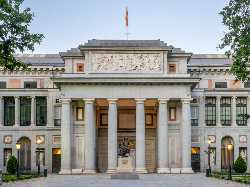 Museo Nacional del Prado
Madrid
Museo Nacional del Prado
Madrid
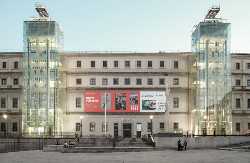 Museo Nacional Centro de Arte Reina Sofía
Madrid
Museo Nacional Centro de Arte Reina Sofía
Madrid
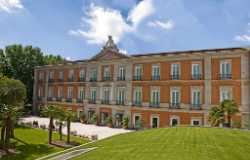 Thyssen-Bornemisza National Museum
Madrid
Thyssen-Bornemisza National Museum
Madrid
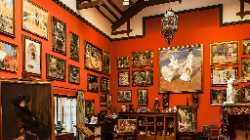 Sorolla Museum
Madrid
Sorolla Museum
Madrid
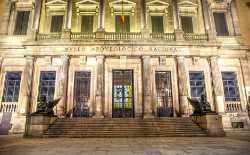 Museo Arqueológico Nacional
Madrid
Museo Arqueológico Nacional
Madrid
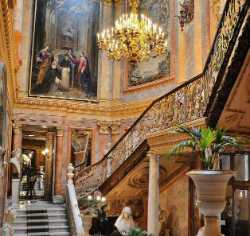 Museo Cerralbo
Madrid
Museo Cerralbo
Madrid
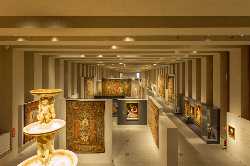 Galería de las Colecciones Reales
Madrid
Galería de las Colecciones Reales
Madrid
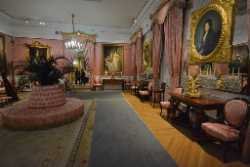 Museo del Romanticismo
Madrid
Museo del Romanticismo
Madrid
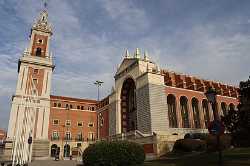 Museo de América
Madrid
Museo de América
Madrid
 History Museum of Madrid
Madrid
History Museum of Madrid
Madrid
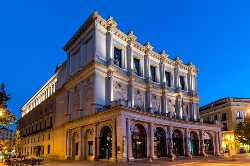 Teatro Real
Madrid
Teatro Real
Madrid
 Teatro Lope de Vega
Madrid
Teatro Lope de Vega
Madrid
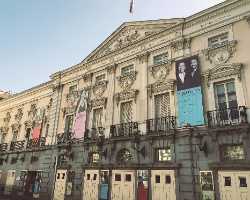 Teatro Español
Madrid
Teatro Español
Madrid
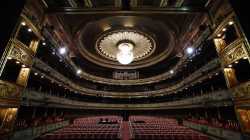 Teatro de la Zarzuela
Madrid
Teatro de la Zarzuela
Madrid
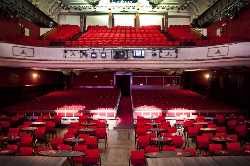 Teatro EDP Gran Vía
Madrid
Teatro EDP Gran Vía
Madrid
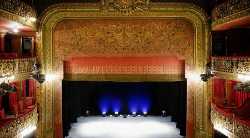 Teatro Lara
Madrid
Teatro Lara
Madrid
 Royal Palace of Madrid
Madrid
Royal Palace of Madrid
Madrid
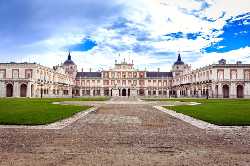 Royal Palace of Aranjuez
Madrid
Royal Palace of Aranjuez
Madrid
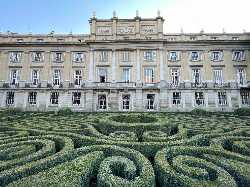 Liria Palace
Madrid
Liria Palace
Madrid
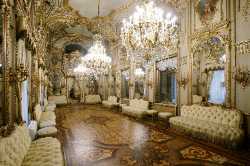 Palacio de Fernán Núñez
Madrid
Palacio de Fernán Núñez
Madrid
 El Retiro Park
Madrid
El Retiro Park
Madrid
 Real Jardín Botánico
Madrid
Real Jardín Botánico
Madrid
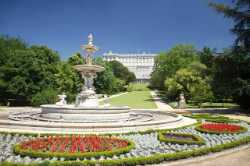 Campo del Moro Park
Madrid
Campo del Moro Park
Madrid
 Jardines de Sabatini
Madrid
Jardines de Sabatini
Madrid
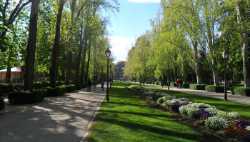 Casa de Campo Park
Madrid
Casa de Campo Park
Madrid
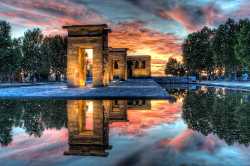 Temple of Debod Gardens
Madrid
Temple of Debod Gardens
Madrid
 Quinta de los Molinos
Madrid
Quinta de los Molinos
Madrid
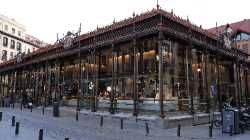 Mercado de San Miguel
Madrid
Mercado de San Miguel
Madrid
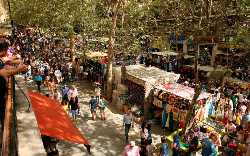 El Rastro
Madrid
El Rastro
Madrid
 Mercado de San Antón
Madrid
Mercado de San Antón
Madrid
 Mercado de la Cebada
Madrid
Mercado de la Cebada
Madrid
 Mercado de Maravillas
Madrid
Mercado de Maravillas
Madrid
 Mercado de Motores
Madrid
Mercado de Motores
Madrid
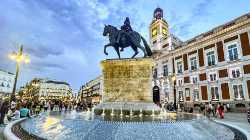 Puerta del Sol
Madrid
Puerta del Sol
Madrid
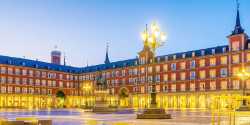 Plaza Mayor
Madrid
Plaza Mayor
Madrid
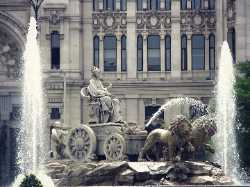 Plaza de Cibeles
Madrid
Plaza de Cibeles
Madrid
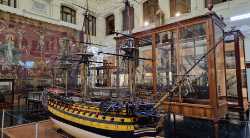 Naval Museum
Madrid
Naval Museum
Madrid
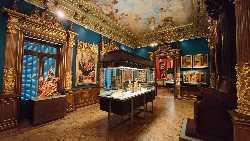 Lázaro Galdiano Museum
Madrid
Lázaro Galdiano Museum
Madrid
 CaixaForum Madrid
Madrid
CaixaForum Madrid
Madrid
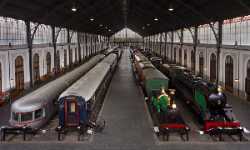 Museo del Ferrocarril
Madrid
Museo del Ferrocarril
Madrid
 National Museum of Natural Sciences
Madrid
National Museum of Natural Sciences
Madrid
 Wax Museum of Madrid
Madrid
Wax Museum of Madrid
Madrid
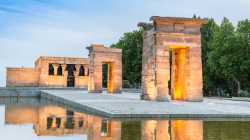 Temple of Debod
Madrid
Temple of Debod
Madrid
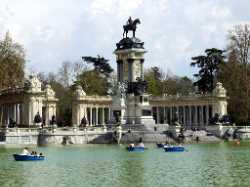 Monumento a Alfonso XII
Madrid
Monumento a Alfonso XII
Madrid
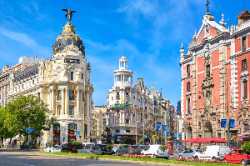 Gran Vía
Madrid
Gran Vía
Madrid
 Santiago Bernabéu Stadium
Madrid
Santiago Bernabéu Stadium
Madrid
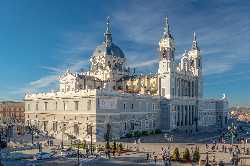 Almudena Cathedral
Madrid
Almudena Cathedral
Madrid
 Galería Álvaro Alcázar
Madrid
Galería Álvaro Alcázar
Madrid
 Guillermo De Osma
Madrid
Guillermo De Osma
Madrid
 Galeria Casado Santapau
Madrid
Galeria Casado Santapau
Madrid
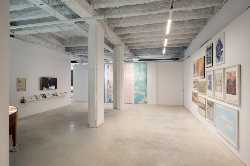 Nogueras Blanchard
Madrid
Nogueras Blanchard
Madrid
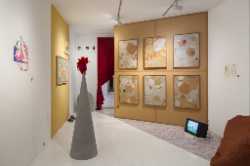 Travesía Cuatro
Madrid
Travesía Cuatro
Madrid
 Leandro Navarro Gallery
Madrid
Leandro Navarro Gallery
Madrid
 Helga de Alvear Gallery
Madrid
Helga de Alvear Gallery
Madrid
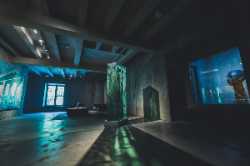 Espacio SOLO
Madrid
Espacio SOLO
Madrid
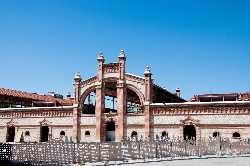 Matadero Madrid
Madrid
Matadero Madrid
Madrid
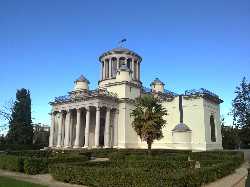 Real Observatory of Madrid
Madrid
Real Observatory of Madrid
Madrid
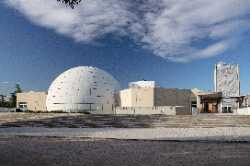 Planetario de Madrid
Madrid
Planetario de Madrid
Madrid
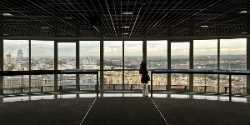 Faro de Moncloa Observation Tower
Madrid
Faro de Moncloa Observation Tower
Madrid